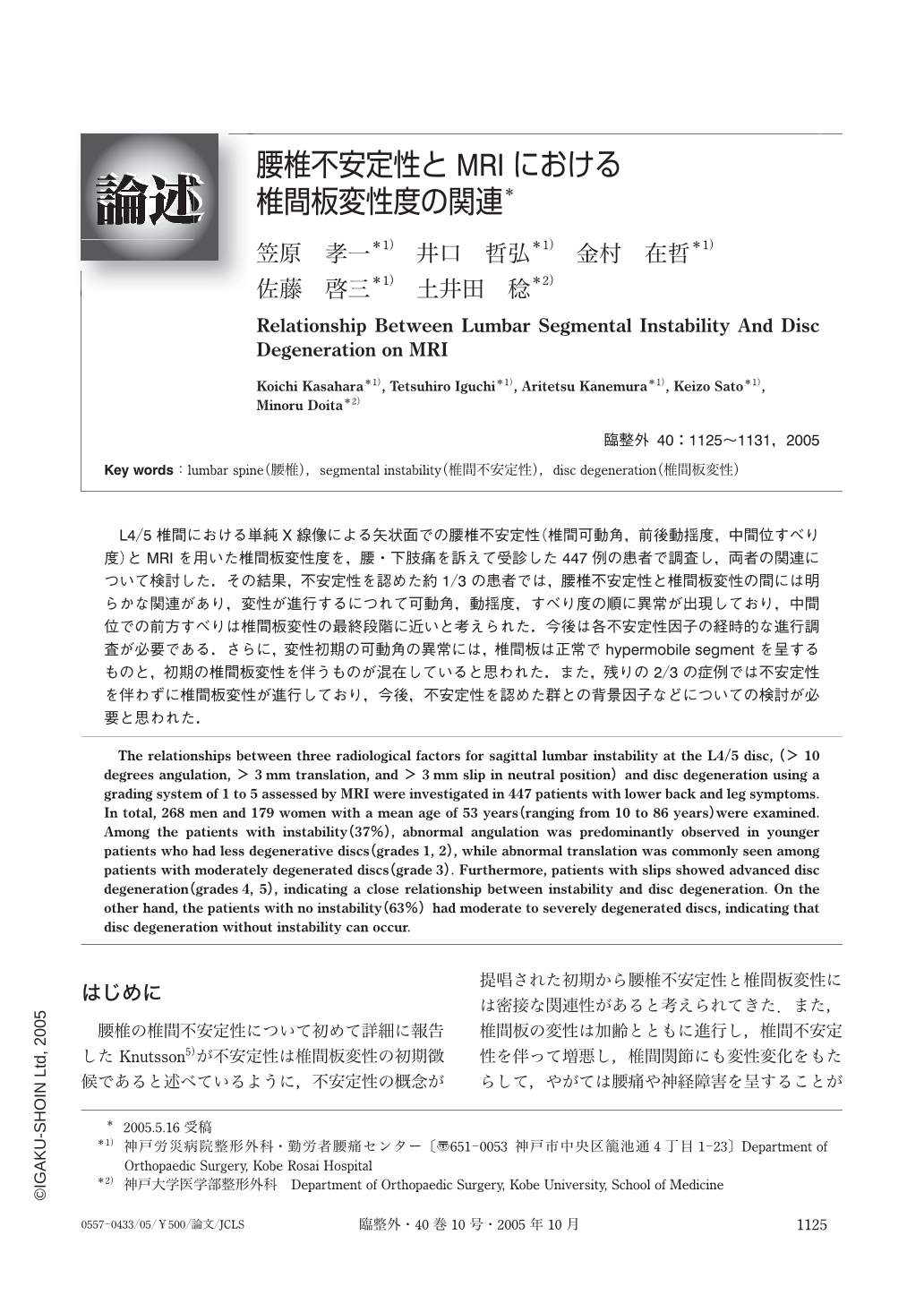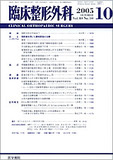Japanese
English
- 有料閲覧
- Abstract 文献概要
- 1ページ目 Look Inside
L4/5椎間における単純X線像による矢状面での腰椎不安定性(椎間可動角,前後動揺度,中間位すべり度)とMRIを用いた椎間板変性度を,腰・下肢痛を訴えて受診した447例の患者で調査し,両者の関連について検討した.その結果,不安定性を認めた約1/3の患者では,腰椎不安定性と椎間板変性の間には明らかな関連があり,変性が進行するにつれて可動角,動揺度,すべり度の順に異常が出現しており,中間位での前方すべりは椎間板変性の最終段階に近いと考えられた.今後は各不安定性因子の経時的な進行調査が必要である.さらに,変性初期の可動角の異常には,椎間板は正常でhypermobile segmentを呈するものと,初期の椎間板変性を伴うものが混在していると思われた.また,残りの2/3の症例では不安定性を伴わずに椎間板変性が進行しており,今後,不安定性を認めた群との背景因子などについての検討が必要と思われた.
The relationships between three radiological factors for sagittal lumbar instability at the L4/5 disc, (> 10 degrees angulation, > 3 mm translation, and > 3 mm slip in neutral position) and disc degeneration using a grading system of 1 to 5 assessed by MRI were investigated in 447 patients with lower back and leg symptoms. In total, 268 men and 179 women with a mean age of 53 years (ranging from 10 to 86 years) were examined. Among the patients with instability (37%), abnormal angulation was predominantly observed in younger patients who had less degenerative discs (grades 1, 2), while abnormal translation was commonly seen among patients with moderately degenerated discs (grade 3). Furthermore, patients with slips showed advanced disc degeneration (grades 4, 5), indicating a close relationship between instability and disc degeneration. On the other hand, the patients with no instability (63%) had moderate to severely degenerated discs, indicating that disc degeneration without instability can occur.

Copyright © 2005, Igaku-Shoin Ltd. All rights reserved.


